#hagley on the brandywine
Text
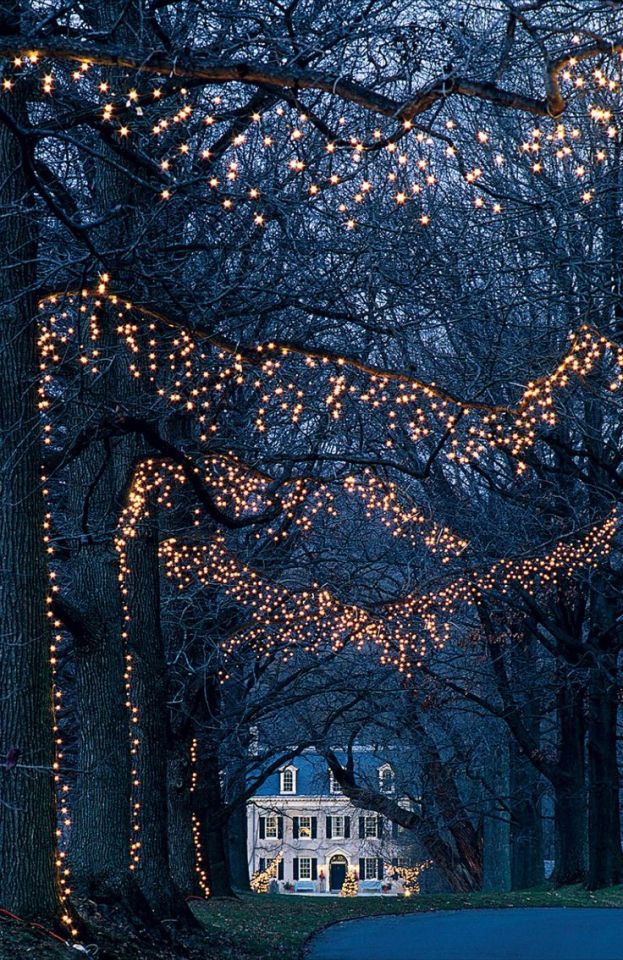
jito57.tumblr.com
Hagley on the Brandywine, Wilmington, Delaware.
10 notes
·
View notes
Photo
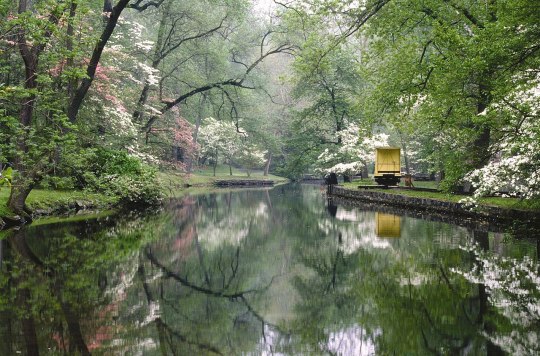
Hagley Mill Race on the Brandywine Creek, Pennsylvania
16 notes
·
View notes
Text
Love Knows No Bounds: The Ultimate Guide to Wedding Venues in Delaware
Delaware, with its rich history, scenic landscapes, and diverse settings, offers a canvas for couples to turn their wedding dreams into reality. From historic estates and charming gardens to beachfront resorts and modern urban spaces, the state provides a plethora of wedding venues that cater to every taste and style. In this comprehensive guide, we will explore the ultimate wedding venue in Delaware, ensuring that your special day is as unique and unforgettable as your love story.
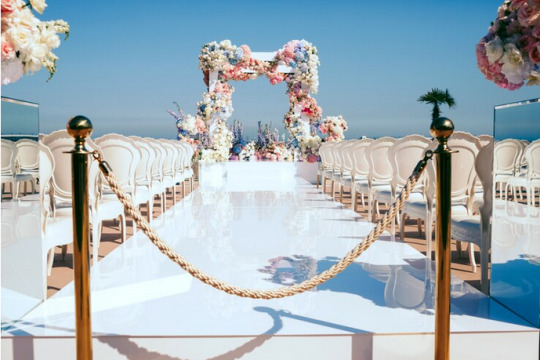
Historic Romance at The Hagley Museum
For couples seeking a wedding venue that seamlessly blends history with romance, The Hagley Museum stands as an iconic choice. Nestled along the Brandywine River, this historic venue features picturesque gardens and the enchanting Eleutherian Mills, providing a timeless backdrop for your wedding ceremony. Exchange vows surrounded by the echoes of the past, and celebrate your union in a setting that captures the essence of historic romance.
Seaside Bliss at Bethany Beach Resorts
Delaware's coastline, adorned with pristine beaches and azure waters, offers a dreamy setting for beachfront weddings. Bethany Beach, in particular, boasts resorts that specialize in turning seaside dreams into reality. Imagine saying "I do" with the ocean as your witness and the sun setting over the horizon. Bethany Beach Resorts provide not only a breathtaking ceremony location but also elegant accommodations and the soothing soundtrack of the waves for a truly blissful seaside celebration.
Garden Elegance at Longwood Gardens
For couples who appreciate the beauty of meticulously curated gardens, Longwood Gardens provides an unparalleled venue for a wedding immersed in natural elegance. With its stunning landscapes, vibrant flower displays, and enchanting conservatories, Longwood Gardens offers a variety of picturesque settings for ceremonies and receptions. Your wedding photos will be adorned with the splendor of blooming flora, creating memories that reflect the timeless beauty of your love.
Urban Sophistication at The Queen in Wilmington
Delaware's urban landscape offers chic and sophisticated venues for couples with a modern sensibility. The Queen, located in Wilmington, stands as a prime example of an urban wedding haven. This historic theater, with its elegant ballroom and rooftop terrace, provides a stylish setting for ceremonies and receptions. The Queen's blend of vintage charm and contemporary design ensures that your wedding is a celebration of love that transcends time and trends.
Rustic Charm at The Farmstead
For couples yearning for a wedding with a touch of rustic charm, The Farmstead is the epitome of countryside allure. Surrounded by rolling hills and open fields, this venue offers a barn setting that exudes warmth and intimacy. The Farmstead allows couples to infuse their wedding day with the simplicity and beauty of rural landscapes, creating an atmosphere that is both laid-back and enchanting.
Culinary Delights at The Hotel du Pont
Delaware's culinary scene meets opulence at The Hotel du Pont in Wilmington. For couples who consider gastronomy a vital part of their celebration, this historic hotel offers not only luxurious event spaces but also exquisite catering. Imagine indulging in a wedding feast crafted by skilled chefs, surrounded by the grandeur of French Renaissance architecture. The Hotel du Pont ensures that your wedding is not only visually stunning but also a feast for the senses.
Conclusion: Crafting Your Love Story in Delaware
Delaware, with its diverse landscapes and historic charm, provides a wealth of options for couples seeking the perfect wedding venue. Whether you envision a historic romance at The Hagley Museum, seaside bliss at Bethany Beach Resorts, garden elegance at Longwood Gardens, urban sophistication at The Queen, rustic charm at The Farmstead, or culinary delights at The Hotel du Pont, each venue offers a unique canvas for crafting your love story.
As you embark on the journey of planning your wedding in Delaware, consider the atmosphere and setting that aligns with your vision. Delaware's rich tapestry of venues ensures that you can curate an experience that reflects your personality and creates lasting memories. May your wedding day in Delaware be a chapter in the timeless story of your love, surrounded by the beauty and diversity that this enchanting state has to offer.
0 notes
Photo

On this day in 1787, the Hagley Library’s home state of Delaware became the first state to ratify the Constitution of the United States, earning it the nickname of “The First State”.
We’re marking the occasion with this hand-drawn map that’s even closer to home. Created in 1797, just ten years after statehood, it was used by landowner Rumford Dawes to apply for insurance on the buildings depicted.
This property was first put to use as an industrial site eighteen years earlier in 1779, when John Gregg and his brother Samuel Gregg, Jr. partnered with brothers Joshua and John Gilpin to establish a forge, rolling mill, slitting mill, and saw mill at the site. Dawes purchased the property in 1783, and used it to operate a metalworking business with his brother Abijah, where they manufactured nails and other goods for sale in their store on Water St. in Wilmington. By 1810, they had sold the property to Thomas Massey, who used the site to run a cotton-spinning business.
On October 1, 1812, Massey sold the property to the E.I. du Pont de Nemours and Company, which was looking to expand the operations of their black powder mills located upstream at Eleutherian Mills, which had been founded in 1802 by the French immigrant Eleuthère Irénée du Pont. By the time industrial operations at the site ceased in 1921, the DuPont company’s operations had spread nationwide. The Hagley Museum opened here in 1957, and the Library followed in 1961.
#Delaware#First State#The First State#OTD#on this day#constitution of the united states#constitutional history#american history#1780s#1790s#Delaware history#industrial history#DuPont#better things for better living#maps#insurance maps#hagley#hagley history#brandywine river#brandywine valley
11 notes
·
View notes
Photo
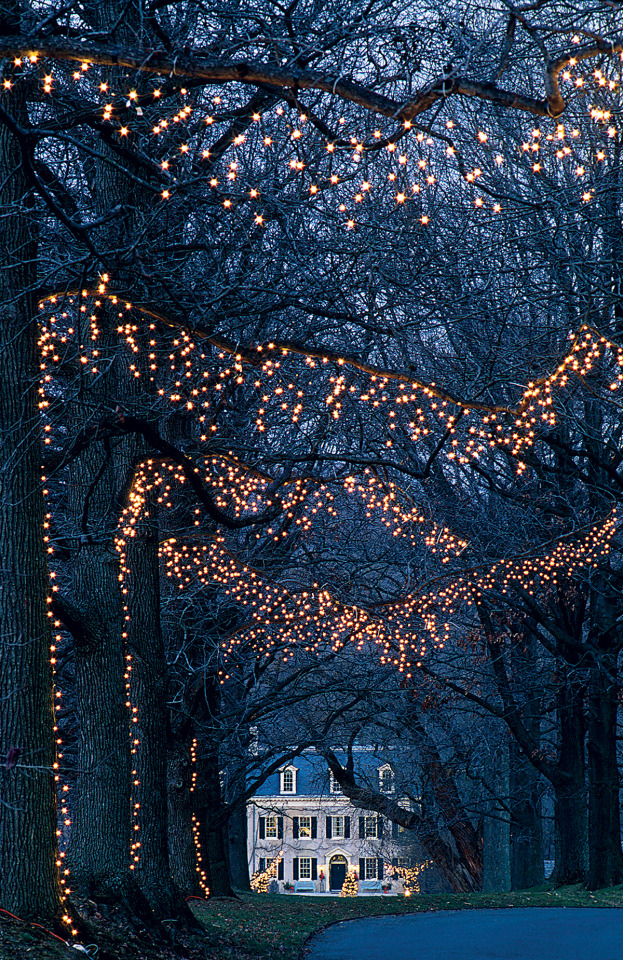
Hagley on the Brandywine, Wilmington, Delaware, United States,
Courtesy Greater Wilmington Convention & Visitors Bureau
#art#design#architecture#hagley#wilmington#delaare#United States#luxury lifestyle#luxury house#luxury home#season#magic#holidays greeting#history#style#lighting#gardens#landscaping
5K notes
·
View notes
Text
That’s History, Kit


Kit and I went back in time to visit the Hagley Museum and Library in the Brandywine Valley of Delaware. Hagley marks the very beginning for the start of the French Du Pont family in the US, wherein they owned and lived on a black powder manufacturing site from 1802 to 1921 (totally get if you’re not into that—we were very skeptical), and made a great deal of money whilst doing so.
Kit wouldn’t actually have been able to visit Hagley until much later in her time. The museum opened in the 1950’s, long after the operation shut down in the 1920’s due to the overwhelming popularity of that newfangled technology, dynamite (good old nitroglycerin. I believe one Lammot Du Pont actually died in an explosion after setting up his own high explosives plant in 1884. He got lost in the sauce, which I guess is a reference to Zola even though that line didn’t even end up in the movie somehow?! I digress).

Kit: I walked through the Upper Banks first, where all the workers lived with their families. Right here I’m in front of a spring house—which would’ve been of course set over a spring—where they could store food in a cool, stable place.
Hagley is pretty idyllic now, covered with languishing overgrowth, much greenery, and rolling hills, which is a far cry from its origins. In its heyday it strikes me that it would be a very dangerous place and I would not let Kit anywhere near it. Apparently 42% of the gunpowder for the North was produced here during the Civil War. Now we’re free to tour the grounds as we please.


Kit and I were fascinated by this garden, which the museum aptly described as a “ruin within a ruin within a ruin”.
Kit: This garden was designed by the great-granddaughter of the original founder of this whole place. His name was E.I. Du Pont, and her name was Louise E. Du Pont Crowninshield. She wanted it to look kinda decrepit after seeing the ruins in Italy. I gotta say, rich people sure are interesting sometimes. They spent a whole boatload of money just to make things look super OLD! Pretty funny!
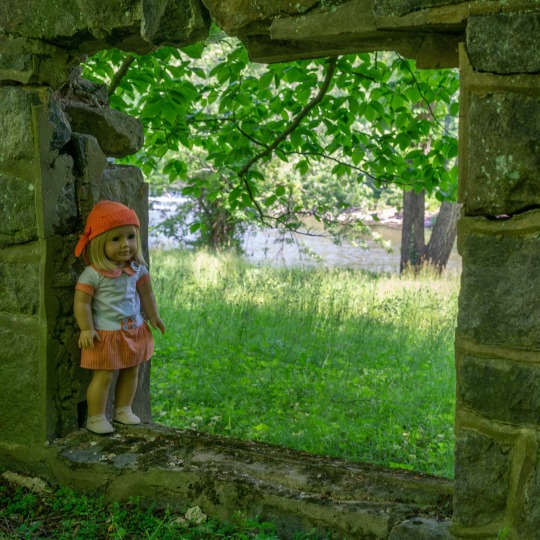
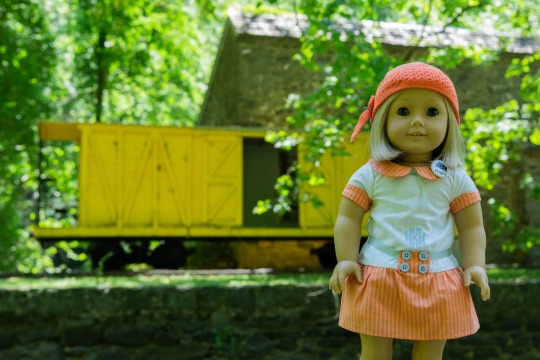
We stopped to check out the Brandywine River, which was the whole reason the Du Ponts chose to base their operations here. They needed water power to make any of the manpower worthwhile.
Kit: I really liked this yellow boxcar. It didn’t connect to any larger rail networks and was just used for transporting black powder and its ingredients. You’re still important to me though, little boxcar.
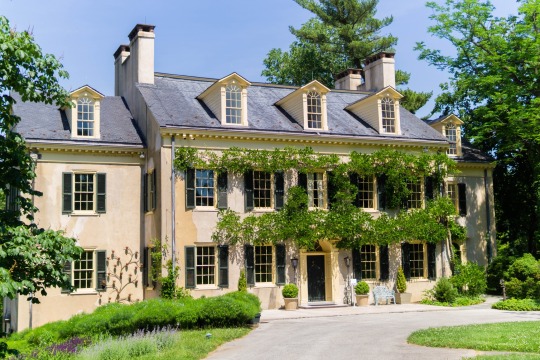
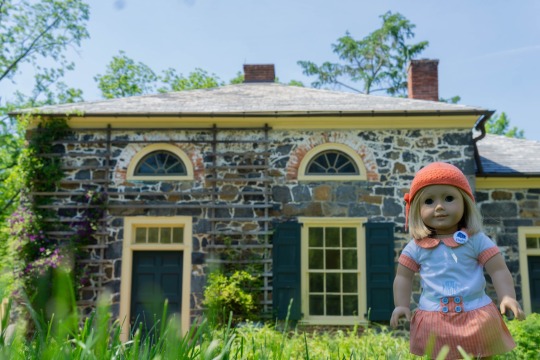
We kind of did the tour backwards, ending up at the ancestral house last. Five generations of Du Ponts lived in this Georgian-style home.
Kit: It was a little shadier by the First Office, so I strayed over there. This was built in 1837, because the new president (Boss Henry, who turned the company around following the passing of E.I.) was tired of working from home. I don’t know if Boss Henry got it right with that one, I know plenty of people who love working at home. Finally I got a taste of the Du Pont’s preference in gardens, but I’ll be finding out even more when I head to the Longwood Gardens for my next adventure! See ya, and Happy Pride everyone!
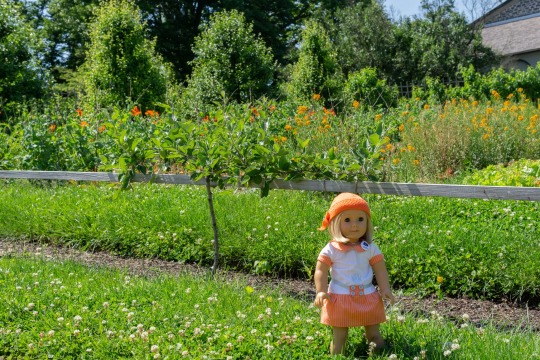
18 notes
·
View notes
Photo
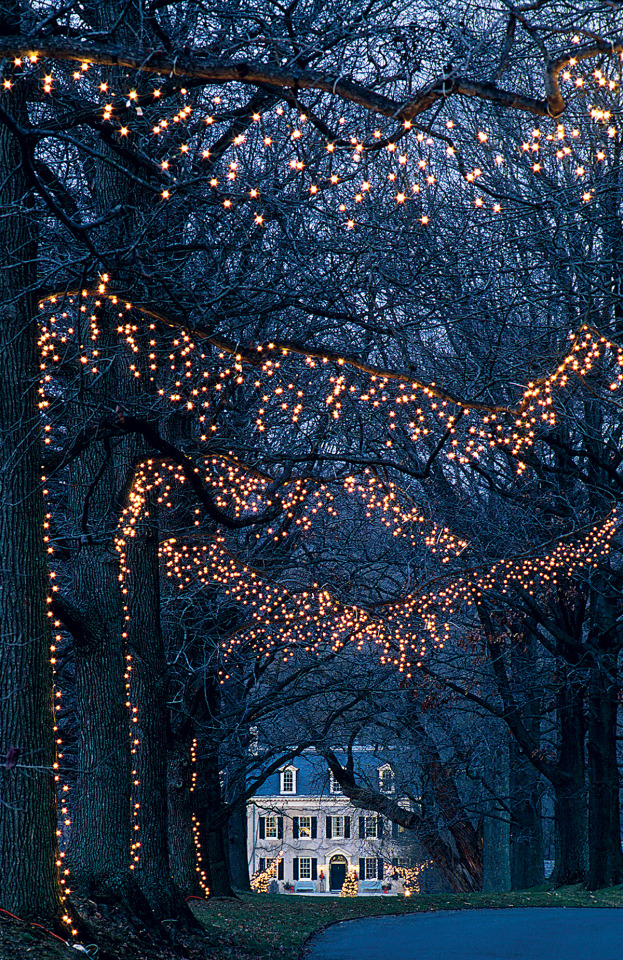
Hagley on the Brandywine, Wilmington, Delaware, United States,
15 notes
·
View notes
Text
Fun Things To Do in Wilmington Delaware
Fun Things To Do in Wilmington, Delaware
Wilmington, Delaware is the largest city in Delaware with a population of over 70,000 people. While Wilmington is not the largest city, it is still divided into numerous subdivisions and neighborhoods, that is split between North of the Brandywine River, East of I-95, West of I-95 and the historic and conservation districts in Wilmington.
For a small “large” city, there is still a lot to do. Whether you are visiting family, or live in Wilmington, there is something for everyone. Perhaps you are visiting with family and your kids, or perhaps you’re visiting solo and looking more for nightlife. If you’re searching for family activities or adventure, there is plenty to do in Wilmington for a day trip. Museums, gardens and scenery, Wilmington is a great tourist spot!
Wilmington & Western Railroad
Located in Wilmington is the Wilmington & Western Railroad. Here you can take a train tour through the Red Clay Valley of Wilmington. These steam and diesel powered trains offer theme based trips and are perfect for kids and the entire family. There are many events year-round, such as in September there is Mt. Cuba Meteor, Brews on Board where local craft brews are served on a 90 minute trip through the valley, Hayride Express, Hockessin Merchant Express, the Autumn Leaf Special in early October, the Halloween Express on October 27th, and the Santa Claus Express on Nov 29th. This is a wonderful attraction not to be missed.
Hagley Museum and Library
If you enjoy museum and historical sight-seeing, the Hagley Museum is a sport worth seeing. It is a former industrial site of the DuPont Company in 1802. It is currently 100’s of acres of rolling hills with stone ruins and beautiful estates. This is now a National Landmark and a Recreation Trail. This is the spot where the DuPont Company was formed, and features a museum with numerous interactive exhibits. This is one of the most beautiful parts of Delaware as well, and features a beautiful property. The tour guides can help guide you around the property, and discuss the rise of DuPont.
Nemours Estate
The Nemours Estate is a large, mansion with huge gardens for sightseeing. The woodlands, meadows and lawns are an incredible sightseeing and photo opportunity. The home is extravagant and features many beautiful paintings all around the estate. There are both self guided and attended tours if you would like to be led on a personal tour of the mansion. There is plenty to see and learn about. If you want to spend an afternoon traveling back in time and imagining what it would have been like to live in such a luxurious estate, this is the place to visit!
Walk The Wilmington Riverwalk
If you are looking for something outdoorsey, be sure to check out the Wilmington Riverwalk. This is a beautiful waterfront developed my Wilmington with excellent landscaping, and restaurants, shops, for a unique day experience. Check out the board walk to experience real downtown Wilmington, and catch a sunset on the riverfront. It features a beautiful view of the river, and is lit up at night with even fishing opportunities underneath the dam! If you want to do something different, take a walk on the riverfront and be sure to grab a photo!
Delaware Museum of Natural History
You won’t find anything like the Delaware Museum of Natural History in Delaware. It has numerous exhibits on dinosaurs and mammals. If you are visiting Wilmington with your children, it features numerous interactive exhibits to entertain your family and facilitate learning.
Delaware Art Museum
If you can appreciate art and culture, the Delaware Art Museum is a must-visit. It is one of the largest art collections in the entire state of Delaware with more than 12,000 pieces. From American art to illustrations from the 19th century, there is plenty to see. There is exhibits and displays featuring work from both national names and local Wilmington artists. There are also classes and workshops offered for visitors.
Grand Opera House
One of the most iconic ‘things-to-do’ in Wilmington, Delaware is visiting the Grand Opera Ho use in downtown Wilmington. The Grand was built all the way back in 1871 to the Masons. It then became a venue for operas and symphonies. You can visit the Grand Opera House to watch plays and opera shows. It is a beautiful and intimate venue with quality lineup. While there isn’t a bad seat in the house, you may want to try to get a seat in the balcony or the Parquet!
Brandywine Zoo
The Brandywine Zoo is located in downtown Wilmington on over 12-acres land, and over 150 different species! The zoo has three sections, the main zoo, a petting zoo and for the exotic animals. Be sure to visit the sloth exhibits, the capybara and the red pandas! If you are traveling with children, there are plenty of educational and informational learning opportunities on the exhibits that focus on select species!
youtube
Restaurants
Wilmington is home to some of the most delicious restaurants in not only Delaware, but the Mid Atlantic! Big Fish Grill on the Riverfront is the perfect dining spot after walking on the Riverfront. It features a perfect location with delicious steaks. Big Fish Grill has delicious calamari and seafood, and a beautiful outdoor ambiance. Another highly rated and reviewed Wilmington restaurant is Domain Hudson. This is a restaurant that features classy New American food and an extensive wine menu. If you are traveling to North Wilmington it is one of the best restaurants in the area with not only excellent food, but mouth-watering cocktails as well. It is one of the lesser-known restaurants, but highly rated and adored by all those that do.
Banks’ Seafood Kitchen and Raw Bar has a patio, happy hour and riverfront setting to create the perfect ambiance. If you like seafood, be sure to visit Banks. Whether you like tuna, oysters, crab, soft shelled crab or scallops, this is one of the most delicious seafood restaurants in all of Wilmington. Trolley Square Oyster House is another hot spot seafood restaurant in Wilmington with a raw bar and seafood plates. You may want to sample the crab cakes or the fish ‘n’ chips or oyster! There is both an indoor and outdoor bar with copious amounts of space to dine in comfort!
A Local Wilmington Roofing Company That You Can Trust
Is your roof leaking? Do you have an aging roof that is in need of being replaced? Don’t hire just any roofing company, as your roof is one of the most valuable investments you will make in your home. We have proudly served the Wilmington metro area for years, and take pride in our Delaware roots. We shop at the same stores as our customers, and eat at the same restaurants. There is no doubt that we take our commitment to the Wilmington community seriously, as we value our local roots and contributions.
We provide roof replacement services across the Wilmington area, including asphalt shingle, metal and slate roof replacement. Give us a call today for a next day roof inspection! Or, visit our website http://www.bestdelawareroofing.com for more information.
The post Fun Things To Do in Wilmington Delaware appeared first on Delaware Roofing Company | Wilmington | Dover | DE Roofing.
from Delaware Roofing Company | Wilmington | Dover | DE Roofing https://bestdelawareroofing.com/fun-things-to-do-in-wilmington-delaware/
1 note
·
View note
Text
Wilmington is a city in Delaware

Wilmington is a city in Delaware found on the Christina and Delaware rivers. Downtown’s early-twentieth-century DuPont Building is part of the native du Pont household legacy, and that is additionally evidenced at the Hagley Museum. Those grounds include the 1802 du Pont gunpowder works plus the family's Georgian-style home. The Previous Swedes Church, connecting Christina River and Brandywine Creek, is from 1698. Brandywine Park is as well as the north. https://en.wikipedia.org/wiki/Wilmington,_Delaware
0 notes
Text
Longwood Gardens: A Treasure Of The Brandywine Creek Valley In Pennsylvania
Italian Water Garden at Longwood Gardens
Longwood Gardens have evolved into one of the premier horticultural display gardens in the United States. The history of the gardens, can be traced back to the beginning of the 18th century. Today, the more than 1,000 acre estate (436 hectares), features endless beds of flowers and exquisitely maintained grounds, featuring 11,000 different types of plants.
These marvelous gardens are our fourth stop in Off The Beaten Path. Having explored Mesa Verde in Colorado, and making two excursions in Arkansas, one at Blanchard and the other at Crystal Bridges, travelers should now consider a trip to Longwood Gardens. These magnificent gardens are located in Southeastern Pennsylvania within the Brandywine Creek Valley.
Hagley Mill Race on the Brandywine Creek
Longwood Gardens has attracted more than one more million visitors annually since 2012.
Our story begins, on land owned by William Penn, the founder of Pennsylvania. George Peirce would purchase 402 acres from representatives of Mr. Penn in 1700. One of his sons named Joshua, built the brick farmhouse in 1730. It still stands today, though it has been somewhat enlarged.
Peirce-Du Pont House, currently a museum.
Twin great grandsons,both who pursued an interest in natural history, began planting different varieties of trees in 1798, that would eventually cover 15 acres. The collection included individual specimens from North America, Europe and elsewhere.
By the middle of the 19th century, the Peirce Arboretum was one of the finest collections of trees in the United States.
At this time,the local citizenry began to use the grounds for public events.
Towards the end of the century, the family was no longer maintaining the property. In early 1906, a lumber mill operator was contracted, to remove trees from a 41 acre section of the estate.
Exterior walkway,in November
It was this pending action, that prompted Pierre du Pont to purchase the entire property. The du Pont wealth permitted a major expansion of the grounds.
What visitors see today, is largely based on the creativity and imagination of Pierre, in his new vision of what would become Longwood Gardens. There was no grand master plan, but he would later draw heavily on French and Italian garden designs.
Pierre would refer to the property as Longwood. The name came from the nearby Longwood Meeting House, which in turn was titled after a nearby farm named Longwood. The original use of the name was probably derived from a nearby expanse of forest, referred to as The Long Woods.
Longwood Gardens Railway Display
The following year Mr. du Pont would lay out the first garden, a 600 foot long bed that would become known as the Flower Garden Walk. It remains one of the most popular attractions at Longwood even today.
The first fountain at Longwood would be constructed in the center of the walk.
The beauteous effect of the Flower Garden Walk in the springtime, prompted Pierre to begin hosting garden parties in June. As one of the highlights of the social season, it also encouraged the entrepreneur to attempt even more natural extravagance at Longwood.
Indoor Hall in November
One result would be the Open Air Theatre, that would come into existence as of 1912. Pierre had been inspired from a similar facility near Siena, Italy. Within a year, he equipped it with secret fountains that shot out of the stage door, to drench visiting family members.
In 1915, Pierre would build an extension onto the original Peirce house and connected the new wing with the old one through a conservatory. It would become Longwood’s first winter garden. It would be quickly planted with exotic foliage, that became a favorite of the new Mrs. du Pont that same year.
One-Thousand Bloom Chrysanthemum shown during the annual Chrysanthemum Festival held in November
The following year, Pierre was contemplating the creation a much larger indoor garden installation. In 1921, the remarkable Conservatory would be inaugurated. The latest technology was used to heat the water and power the facility, but it would all be hidden, so as to not distract from the grandeur of the place.
In 1923, an elegant Music Room with a massive 3,650 pipe Aeolian, was built opening onto the main greenhouse. A Steinway Grand Piano would be purchased the same year.
In 1930, Pierre would engage the construction for the largest residence organ in the world. This would be the 10,010 pipe Aeolian organ. This famous instrument was placed in the Ballroom. Today, it forms the cornerstone, to the resident performing arts program at Longwood.
Of course, Mr. du Pont allowed the public, access to all these wonders and they came in droves to experience it. Numerous social and civic events would be staged on the premises, adding to the fame of Longwood.
Main Fountains at Longwood Gardens
From 1925 to 1927, a Water Garden would be constructed in a low lying area. It can be found northeast of Longwood’s Large Lake. This feature was inspired by the Villa Gamberaia outside Florence, Italy. The version designed by Pierre would have 600 jets in nine separate displays, that shot from six blued-tiled pools and 12 pedestal basins.
Also installed was a 40-foot tall jet fountain, at the end of the central avenue of trees in Peirces’s Park.
He then enlarged the Open Air Theatre and replaced the old waterworks with 750 illuminated jets.
However, his masterpiece for hydraulic engineering, would be the Main Fountain Garden in front of the Conservatory. Here 10,000 gallons of water a minute, can be shot 130 feet in the air and may be illuminated in every imaginable color.
Between 1929 and 1930, Mr. du Pont would commission the construction of a 61 foot tall stone Chimes Tower. It was based on a similar structure he had seen in France.
Chimes Tower in Longwood Gardens
In 1956, the original chimes would be replaced with a 32 note electronic carillon. In the year 2000, a new 62-bell carillon would arrive from the Netherlands.
The completion of the fountains in the mid 1930’s, marked the end to major construction at Longwood by Pierre du Pont. Although he would later have built, a huge 30 by 36 foot oval analemmatic sundial at the end of the decade. It was to be placed in the Topiary Garden.
The estate had grown from the 202 acres purchased originally by Pierre to 926 acres. This was accomplished by adding 25 contiguous properties. It permitted Longwood to be a functioning farm that provided food for the du Pont family and their many employees. Farming operations would later cease in 1951, except for the orchards and the growing of some vegetables.
The gardens would be enriched, by the gift of a famous orchid collection from Mrs. William K. du Pont.
In 1946, the federal government gave approval for the Longwood Foundation, the charitable organization set up by Pierre, to operate Longwood Gardens. This was done to give the property tax-exempt status.
Mrs. du Pont had died in 1944, and the couple did not have any children. Mr. du Pont himself, would die in 1954, at the age of 84.
The foresight of Pierre left a well funded and adaptable model in place upon his death. Five very experienced businessmen who were his nephews, were already trustees of the Longwood Foundation.
They would hire as the first director of the Gardens, Russell Seibert an experienced horticulturist and public garden administrator. He would soon embark on a new path for these now famous gardens.
Longwood Gardens Fountain Night Display
The 1950’s and the 1960’s brought enormous change to Longwood Gardens similar to the expansion that took place in the 1920’s. New gardens, a plant nursery, and an experimental greenhouse were soon established. Other greenhouses devoted to tropical plants would also be built including the now spacious Palm House. It contains over 60 varieties of palms.
The late 1960’s saw the installation of the still popular Eye of Water and a more wild garden of 86 acres known as the Meadow, which the latter would finally be opened to the public in 2014.
A Desert House and 13 outdoor waterlily pools, were also created.
Brochures, guide maps and other publications were soon being produced. Along came a new visitor center, auditorium and a 1,000 car parking lot.
East Conservatory, Longwood Gardens
Longwood Gardens would be added to the National Register of Historical Places in 1972. The house would be opened for guided tours in 1976.
In 1973, the huge Azalea House now called the East Conservatory opened, which was a refurbishment of the 1928 structure.
Two outstanding professional education programs were developed during this period. Graduate studies and a practical school for horticulture and floriculture.
Fireworks with the fountains were first introduced in 1980, pre-ticketing became necessary by 1985, due to the popularity of the event.
The Terrace Restaurant would open in 1983.
One of the most popular events and one that has grown tremendously since the early 1960’s has been Longwood’s Christmas Display. Today as many as 300,000 guests enjoy the spectacular display of some 400,000 lights, 200 concerts and superb floral arrangements.
In the 1980’s and the 1990’s new gardens include the Silver Garden, the tropical Cascade Garden, the Mediterranean Garden and the Children’s Garden.
Two million minor bulbs were planted over a 20 year period starting in 1985, to create huge drifts of late winter and early spring color every year.
Native azaleas and rhododendrons would be added to Peirces’s Park starting in 1989. A new distinction was then made between the original arboretum (the Park area) and the seven acre pleasure park, renamed Peirces’s Woods to the southeast.
The biggest change in designation came in 1995. It was then that Peirces’s Woods was designed as an art form garden, that brought together the most ornamental characteristics of the eastern deciduous forests. The concept was to use native plants to create a woodland garden as an art form. The whole idea was new to Longwood and it would be among the first to try such a construct.
Also in 1995, the Heritage Exhibit would open in the Peirce-du Pont House.
Today Longwood Gardens has a staff of over 1,300 employees, students and volunteers. The Foundation manages a yearly budget of some $50 million USD (United States Dollars). The site is continuously evolving, to meet the changing tastes and demands of a new century.
The contributors to these wonderful gardens are all part of the Visionary Master Plan, which is to keep and maintain the facility as one of the world’s greatest gardens.
Location
Longwood Gardens is located at 1001 Longwood Road, Kennett Square, Pennsylvania 19348. Their phone number is (610) 388-1000.
The website for online information is www.longwoodgardens.org/
How To Get There
Visitors will arrive using US Route 1, about 3 miles northeast of Kennett Square, Pennsylvania.
Longwood Gardens is located 30 miles west of Philadelphia.
Hours of Operations
The museum is open daily for most of the year from 9:00 am to 6:00 pm.
The cafe is open 10:00 am to 5:00 pm.
There are a number of holidays where hours are more restrictive.
Between Thanksgiving through New Years, hours are expanded to better enjoy the holiday displays.
Different parts of the park may be closed for maintenance, upkeep and preparations for new displays, at various times of the year.
Admission and Entrance Fees
The admission fees for the Gardens for most non-peak days, is $23.00 USD for adults.
During the Christmas Season (peak days), this will rise to $30.00 USD.
College students with valid identification are admitted at $20.00 USD and $27.00 USD respectively.
Seniors (62+) are also admitted at $20.00 USD on non-peak days and $27.00 USD for peak days.
Youth admission fees (from 5-18) are admitted at $12 USD on non-peak days, to $16 USD for peak days.
Children ages 4 and under, are admitted free on all days of operation.
*To receive a group discount there must be at least 15 members in your party.
*Military personnel, both active and retired as well as their families, with Department of Defense identification, are entitled to a 25% discount off of the general admission. This reduction in price is only available on site.
* Timed admission tickets are required for everyone and only a limited number of tickets are available at any given time. Especially if there is a special exhibition and during holidays, this writer recommends you purchase your tickets in advance or on-line.
* It must also be noted, that all of the Gardens are considered a smoke-free environment.
Lodging
Is available in the town of Kennett Square and numerous nearby communities.
The post Longwood Gardens: A Treasure Of The Brandywine Creek Valley In Pennsylvania appeared first on WanderingTrader.
from Updates By Jane Heart http://wanderingtrader.com/travel-blog/united-states/longwood-gardens-treasure-brandywine-creek-valley-pennsylvania/
0 notes
Link
DuPont Company Brandywine powder yards and neighboring worker communities' photographs

0 notes
Text
Part III: Repurposing Old Mills
I had not seen a proper mill until I went to Franklin Pierce College in 2004. My friends and I often drove to Jaffrey, New Hampshire to get subs from Uncle Mike’s. A few times, we would park the car and walk around Jaffrey’s town center. I fell in love with the Jaffrey mill, which is situated on a damned-up section of the Contoocook River. I loved the red brick stately exterior and the large windows. I loved the sound of the river echoing off the mill walls.
Where I grew up, our mill looks a bit different. The Brandywine River runs through northern Delaware, and its power was utilized by the DuPont company to produce gunpowder in the 1800’s. These stone mills are beautiful and small. Their size wasn’t because we like to keep it small in the first state. The construction of the small mill sites was due to safety. It was much safer to produce smaller batches of gunpowder within smaller buildings to decrease the risk of an explosion. If you ever wander into Delaware, I would highly recommend visiting the Hagley Museum. The museum has done a wonderful job restoring and maintaining this former DuPont property. Most DuPont properties in Delaware are worth a visit: Hagley Museum, Nemours Mansion and Gardens, Winterthur, and Longwood Gardens. (Longwood is just right over the border in Pennsylvania, but I swear it is the most beautiful garden that I have ever seen, and I’ve been to the Palace of Versailles.)
While the stone and quaintness of the gunpowder mills along the Brandywine River always impressed me, the sheer size of the mills in New England doubly impressed me. The mills in New England certainly aren’t better than the mills at Hagley, but they are different. That is my aim for living in New England, to see and do different things, but I digress.
The mill in Jaffrey, New Hampshire had been neglected for a time before my tenure at Franklin Pierce College. I mourned for this stately building and wished that someone would rehab it. Come to find out, a property management company did buy the building a handful of years ago and converted the old mill into apartments. This got me thinking about what had happened to other old mills in New England.
I got my answer not through books, but through experience. My boyfriend Zak is a cartoonist, and he enjoys connecting with other artists. A friend of his recommended stopping by Whiting Mills in Winsted, Connecticut for this exact reason.
The old mill had been purchased in 2004 and converted into artist studios. Prior to that, the mill belonged to a series of buildings along the Still River. In the late 1800’s, the Winsted Hosiery Company had built eight buildings as part of its manufacturing of men’s hosiery. Winsted was a perfect location for the Winsted Hosiery Company because it was situated by the river, and the Litchfield Hills region was already home to over twenty factories that manufactured products like clocks, hardware, and appliances (Winsted Hosiery Mill). The Winsted Hosiery Company had a period of prosperity and rolled with the times, later reorganizing as The Winchester Spinning Company. This company made men’s and women’s wool sweaters (Winsted Hosiery Mill). Unfortunately, in 1965 the company decided to move to North Carolina as manufacturing and labor were cheaper down south (Winsted Hosiery Mill, Building # 2 (1905)). Then time moved on. One building was converted into apartments, another was converted to Whiting Mills, and others were lost to time.
I first visited Whiting Mills on one of their Open Studio days. Most of the artists and artisans were open. It was a lovely experience to walk through brick lined halls with beautiful wood floors under my feet. The mill is bright, thanks to the original builders’ solution to a dark manufacturing space with continuous rows of windows and an open floor plan (Winsted Hosiery Mill). Many artists and artisans have decorated their store fronts with their wares or their art. The place is a wonderful mixture of artists: painters, ceramists, photographers, and graphic designers. There are also herbalists, a therapist, a yoga instructor, a woodworker, toy-train enthusiasts, and an electrician. It’s an eclectic group, but they are perfectly suited in this converted mill. My favorite business at Whiting Mills is Walk in the Woods, LLC. Rosemari, the owner of Walk in the Woods, is an herbalist. The first time I visited Whiting Mills, I was drawn to her studio space. Plants hung from the studio’s beams; others were placed in clear jugs. It is a clean and tidy aesthetic that all can appreciate. Rosemari happily chatted with us about her products and the appeal of Whiting Mills. She told us she loves the history of the building and being around other artists and artisans. Zak and I went back to Whiting Mills this Sunday. It was dead. I thought that more artists and artisans would be in their studios since it was the weekend. This isn’t always a guarantee, says Rosemari. It’s a hit-or-a-miss as to who will be there. Rosemari is always at her studio offering classes or willing to chat about the power of plants. Zak and I bought white sage for the house we are about to rent in Jaffrey, New Hampshire. It was built in 1836, and the sage will hopefully help in making this house a home. Rosemari can walk you through the process and tell you all about other interesting plant related things. Stop by and visit her in studio 310.
So a word to the wise: Plan your visit to Whiting Mills accordingly. Popping by on a random Saturday or Sunday will not guarantee an artist/artisan sighting. I recommend going to one of Whiting Mills’ Open Studio days to acquaint yourself with the artists and artisans. You can even hit up Whiting Mills’ Facebook page for events or the mill’s website for a directory of businesses (http://whitingmills.com/). The building alone is worth a walk around, but it is also nice to support local artists and artisans.
Works Cited
“Winsted Hosiery Mill.” Trust for Architectural Easements, 2016, https://architecturaltrust.org/easements/about-the-trust/trust-protected-communities/winsted-hosiery-mill/. Accessed 22 July 2017.
“Winsted Hosiery Mill, Building # 2 (1905).” Historic Buildings of Connecticut, 17 Nov. 2015, http://historicbuildingsct.com/?p=13294. Accessed 22 July 2017.
0 notes
Photo

Today’s #WorkerWednesday shows employees of the Joseph Bancroft & Sons Co. etching designs on textile rollers at the company’s Print Works Division in Eddystone, Pennsylvania.
This circa 1937 photograph is part of the Hagley Library’s collection of Joseph Bancroft and Sons Company photographs (Accession 1969.025). Joseph Bancroft, an Englishman trained in textile weaving in Lancashire, established his own cotton mill on the Brandywine near Wilmington, Delaware in 1831. The firm was incorporated as the Joseph Bancroft & Sons Company in 1889.
To view more material from this collection online now, click here to visit its page in our Digital Archive.
#WorkerWednesday#Worker Wednesday#textile industry#textile workers#textile history#textile design#women in the trades#women at work#women workers#Joseph Bancroft & Sons#Joseph Bancroft#Delaware history#Eddystone PA
201 notes
·
View notes
Text
Mallard Duck at Powder Mill
Mallard Duck at Powder Mill
Mallard Duck at Powder Mill is a wildlife photograph of a fat Mallard Duck resting in the stones in the icy Brandywine River near the old Powder Mills of Hagley Museum in Wilmington, Delaware.
Title: Mallard Duck at Powder Mill
Nature Photographer: Melissa Fague
Genre: Wildlife Photography
Item ID#: WILD-4027
Prints of this photograph are available at:
Join our VIP Listfor exclusive offers,…
View On WordPress
#"Beautiful Nature photos"#"Fine Art Photography"#animals#bird#birds#Canvas Prints#creatures#Delaware Photographer#duck#fine art#framed art#framed photographic art#framed photographic art nature#framed photographs#mallard duck#nature#Nature Fine Art#Nature Photographer#Nature Photographer Delaware#Nature Photography#photography#Wall Decor#wall decoration#water fowl#wild life#wildlife#wildlife photography#Wildlife Photos
0 notes
Photo
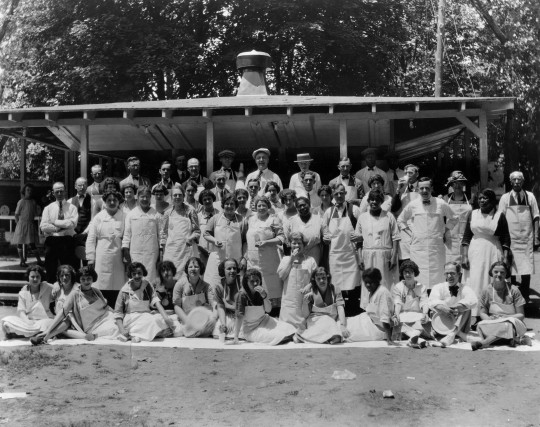
It’s a beautiful day for a (socially-distanced) picnic here in the Wilmington, Delaware region. We’re celebrating this gorgeous weather with these photographs of the Joseph Bancroft & Sons Co. company picnic at Lenape Park near West Chester, Pennsylvania (now Brandywine Picnic Park), which happened on this day, June 16, in 1923.
The group portrait above shows the picnic’s caterer “Mrs. Cooper” and her hardworking staff, who reportedly fed the 1,300 guests of the Joseph Bancroft & Sons Co. company within 25 minutes. The reverse of the photograph identifies this crew as Catherine McMahon, Alice Smith, Frank Supplee, Robert Jamison, William Berry, Harry Fisher, John Kanz, Mary Lee, Ella Green, Amelia Prigg, Mrs. Gerard, Samuel Williams, Rita Brown, John Grant, Frank Wright, James Balloch, Clarence Stradley, Nathaniel Smith, Louise Lynch, James Burt, Sadie Painter, Cora, Minnie Sheppard, Cath. Cathalina, Eliza Whiteman, Frank Scott, Donald Ashbrook, Irvin Welch, William Kane, W. B. Wood, Mrs. E. H. Cooper, Ella Hemphill, and William.
The photograph below shows the crew in action, with what I hope were appropriately grateful picnickers in waiting.

These photographs are from the Hagley Library’s Joseph Bancroft & Sons Co. Miss America photographs (Accession 1972.430) collection. More images from this collection can be found online in our Digital Archive by clicking here.
#1920s#OTD#on this day#on this date#picnic#Joseph Bancroft & Sons#textile industry#West Chester Pennsylvania#parks#Brandywine Picnic Park#June 16#picnics#caterers#catering staff#cooks#public parks
22 notes
·
View notes
Photo

The American Business Women's Association was founded on this day, September 22, in 1949. Following official Congressional resolutions in 1983 and 1986, the date has since been unofficially designated as American Business Women's Day. In recognition of the date, we’re sharing this portrait drawing of Rebecca Pennock Lukens (1794-1854), who Fortune Magazine once called "America's first female CEO of an industrial company".
Lukens’s father, Isaac Pennock, founded the iron works that would later be known as the Brandywine Iron Works and Nail Factory in Coatesville, Pennsylvania in 1793. Soon after Rebecca married Dr. Charles Lukens in 1813, Charles leased the iron works from her father. Under Charles’s management, the iron works expanded into steel manufacture.
But, when Charles died in 1825, Rebecca, then pregnant with her sixth child, inherited a company on the verge of bankruptcy. She chose to maintain ownership of the business and ran the company until 1847. On her retirement, the company was the nation’s leading manufacturer of rolled steel boilerplate. Thirty years after year death, Brandywine Iron and Nail became Lukens Iron and Steel, now the oldest American steel mill still in operation.
This item, possibly created around 1820, is part of Hagley Library’s collection of Lukens Steel Company photographs (Accession 1972.360). The online collection includes woodcuts showing the early history of the mill, interior and exterior views of factory buildings, various depictions of machinery, employees both at work and leisure, floods in 1955 and 1973, and twentieth-century aerial views of the Coatesville plant. Other items depict the owning families, company anniversary celebrations, and philanthropic activities supported by Charles Lukens Huston. The collection has not been digitized in its entirety. Click here to view it in our Digital Archive.
#OTD#on this day#on this date#September 22#American Business Women's Association#American Business Women's Day#Rebecca Pennock Lukens#Rebecca Lukens#Brandywine Iron Works and Nail Factory#Coatesville PA#Pennsylvania history#Lukens Iron and Steel#Lukens Steel Company#1820s#women at work#women executives#women's history#industrial history#iron and steel industry
8 notes
·
View notes